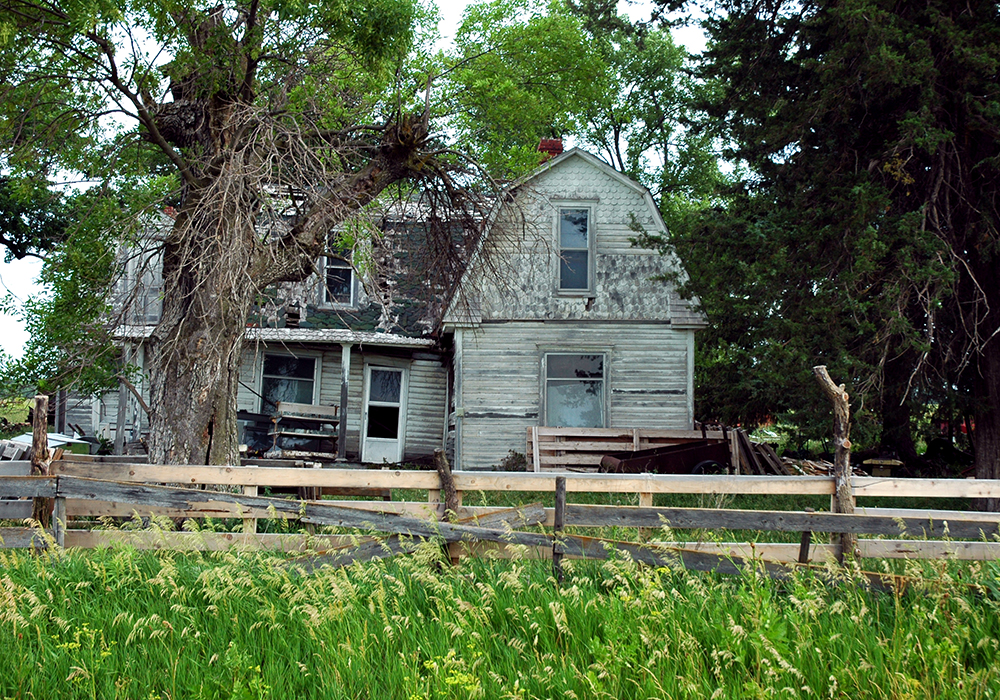Imagine driving down a quiet country road, the sky is a crisp blue, and fields stretch endlessly in every direction. As you round the bend, a farm house appears, nestled among tall trees, with a wooden porch inviting you to sit, relax, and take in the serene beauty of the countryside. This idyllic setting, once synonymous with rural America, has undergone a revival in recent years. The farm house, traditionally built as a functional dwelling for farmers and their families, has transformed into a modern-day haven for those seeking a blend of rustic charm and contemporary style. Once a staple of agricultural life, today’s farm houses combine vintage aesthetics with modern amenities, appealing to urban dwellers and rural dreamers alike.
In this article, we’ll explore the resurgence of farm house-style homes, delve into their history, highlight some surprising statistics on the popularity of farm house design, and explain why these homes are more than just a passing trend.
The History of the Farm house
Farmhouses originated out of necessity. In the 19th and early 20th centuries, they served as practical living quarters for farmers and their families, often built by hand using local materials. These homes were usually situated near the fields to allow easy access to work and storage for crops, tools, and livestock. With their large, open kitchens and spacious layouts, farm houses were designed to accommodate the rigors of agricultural life, providing space for cooking, communal dining, and chores.
As America became more industrialized, the practical farm house gradually faded from the landscape, replaced by suburban homes that prioritized privacy over practicality. However, the rustic beauty and communal spirit of the farm house design endured, evolving over time. By the early 21st century, the farm house style saw a resurgence, particularly among those longing for the simplicity and authenticity it represents. According to a report from the National Association of Realtors, the farm house-style home has become one of the most popular architectural designs in the United States, especially in suburban and rural areas (National Association of Realtors, 2022).
Popularity Surge in Farmhouse Design
The demand for farmhouse-style homes and interiors has skyrocketed in recent years, driven by a mix of nostalgia and aesthetic appeal. A 2021 survey by the real estate platform Zillow revealed that listings with the keyword “farmhouse” in their description sold faster than those without, and often at a premium. In fact, Zillow reported that homes labeled “modern farmhouse” sold 10% faster and at an average of 5% higher price than similar listings without that description (Zillow, 2021).
The popularity of the farmhouse style can be attributed to several key factors:
- Desire for Space and Simplicity: Many people are drawn to the farmhouse for its spacious layout, which contrasts sharply with the tighter confines of urban apartments and modern suburban homes. The open floor plans, large kitchens, and flexible spaces align well with current lifestyles, where family gatherings, home cooking, and entertainment are increasingly prioritized.
- Connection to Nature: Farmhouses typically incorporate large windows and open spaces, providing abundant natural light and unobstructed views of the outdoors. This connection to nature, even if the house is situated in a suburban neighborhood, appeals to those looking for a reprieve from the fast pace of modern life.
- Sustainable Living: Modern farmhouses often incorporate sustainable design elements. Many homeowners are using reclaimed wood, eco-friendly insulation, and energy-efficient windows to reduce their environmental footprint. According to a study published by the American Institute of Architects, 40% of new farmhouses built in the U.S. since 2018 incorporate some level of sustainable or green building practices (American Institute of Architects, 2020).
Key Elements of Modern Farmhouse Design
Despite its historical roots, the modern farmhouse has evolved to fit contemporary tastes. Today’s farmhouse is an eclectic mix of old and new, blending rustic charm with sleek, minimalistic design elements. Here are some of the most defining features:
- Exposed Beams and Reclaimed Wood: Wooden beams are a hallmark of traditional farmhouses, but modern designs often use reclaimed wood to add character and a touch of history. These elements create warmth and texture in the home, grounding the modern aesthetic with rustic roots.
- Neutral Color Palettes with Natural Accents: While older farmhouses were sometimes vibrant with paint colors, the modern farmhouse tends to favor neutral palettes—think whites, grays, and earthy tones. The muted colors allow natural wood and stone elements to take center stage, enhancing the home’s organic feel.
- Open Floor Plans: One of the most attractive features of the farmhouse style is its open floor plan. Originally designed to accommodate large families and community gatherings, this layout promotes connectivity, making it ideal for today’s emphasis on family and social engagement.
- Farmhouse Sinks and Sliding Barn Doors: Features like apron-front sinks and barn doors have become farmhouse design staples. These elements, both functional and aesthetic, lend authenticity to the style, reminding homeowners of the farm house’s practical origins.
- Large, Functional Kitchens: Farmhouses have historically included large kitchens to accommodate family gatherings and farm-to-table meals. Today, the farm house kitchen is often the centerpiece of the home, designed for both beauty and functionality, with ample space for cooking, dining, and socializing.
Why Homeowners Love the Farm house Aesthetic
The appeal of farm house-style homes extends beyond their looks. Many homeowners are drawn to the farm house for its story and the lifestyle it represents. According to a 2022 survey conducted by the interior design platform Houzz, nearly 70% of homeowners renovating their kitchens preferred farmhouse-style designs, citing reasons such as a desire for more space, a cozy and inviting atmosphere, and an emphasis on family-oriented spaces (Houzz, 2022).
Additionally, the farm house aesthetic aligns with the minimalist and decluttering trends popularized by figures like Marie Kondo. Farmhouse-style homes are often uncluttered, focusing on quality over quantity. This simplicity appeals to people looking to reduce stress and embrace a more intentional way of living.
Farmhouse Homes in Today’s Real Estate Market
The popularity of the farmhouse aesthetic has had a noticeable impact on the real estate market. Real estate agents across the country report that listings with farmhouse elements are in high demand. According to Realtor.com, searches for “farmhouse” and “modern farmhouse” increased by 25% from 2020 to 2022, with particular interest in states like Texas, Tennessee, and North Carolina, where buyers have more access to larger properties (Realtor.com, 2022).
In addition to resale value, the cost of building or renovating a home in the farm house style can vary widely depending on materials and design choices. A custom-built modern farmhouse with sustainable materials and high-end finishes can cost significantly more than a standard suburban home, though it often recoups much of that investment upon sale.
Challenges and Considerations
While the farmhouse style is undeniably popular, there are some considerations to keep in mind. Farmhouses can be more expensive to build, particularly if they include custom or reclaimed materials. Additionally, maintaining a farmhouse aesthetic without sacrificing modern conveniences requires thoughtful design choices. For instance, while exposed beams and wood finishes add character, they may also require more upkeep than synthetic materials.
Moreover, some critics argue that the mass adoption of the farm house style has led to a kind of “cookie-cutter” effect, where modern interpretations lack the authenticity of historical farmhouses. The challenge, therefore, lies in balancing rustic charm with genuine craftsmanship and quality.
Conclusion: A Lasting Legacy
The modern farmhouse trend shows no signs of slowing down. It resonates deeply with those looking for a sense of connection—whether to the land, to history, or to a lifestyle centered on family and nature. In an era where many people feel increasingly disconnected from the natural world, the farm house offers a reprieve. It’s a style that captures the imagination and brings a slice of rural peace to even the busiest urban settings.
The farm house is more than just a style; it’s a way of life. As long as people continue to crave simplicity, warmth, and a connection to the past, the farmhouse will remain a beloved architectural choice. Whether in the heart of the countryside or on the fringes of the suburbs, these homes continue to evoke a sense of nostalgia while adapting beautifully to the needs of the modern world.











